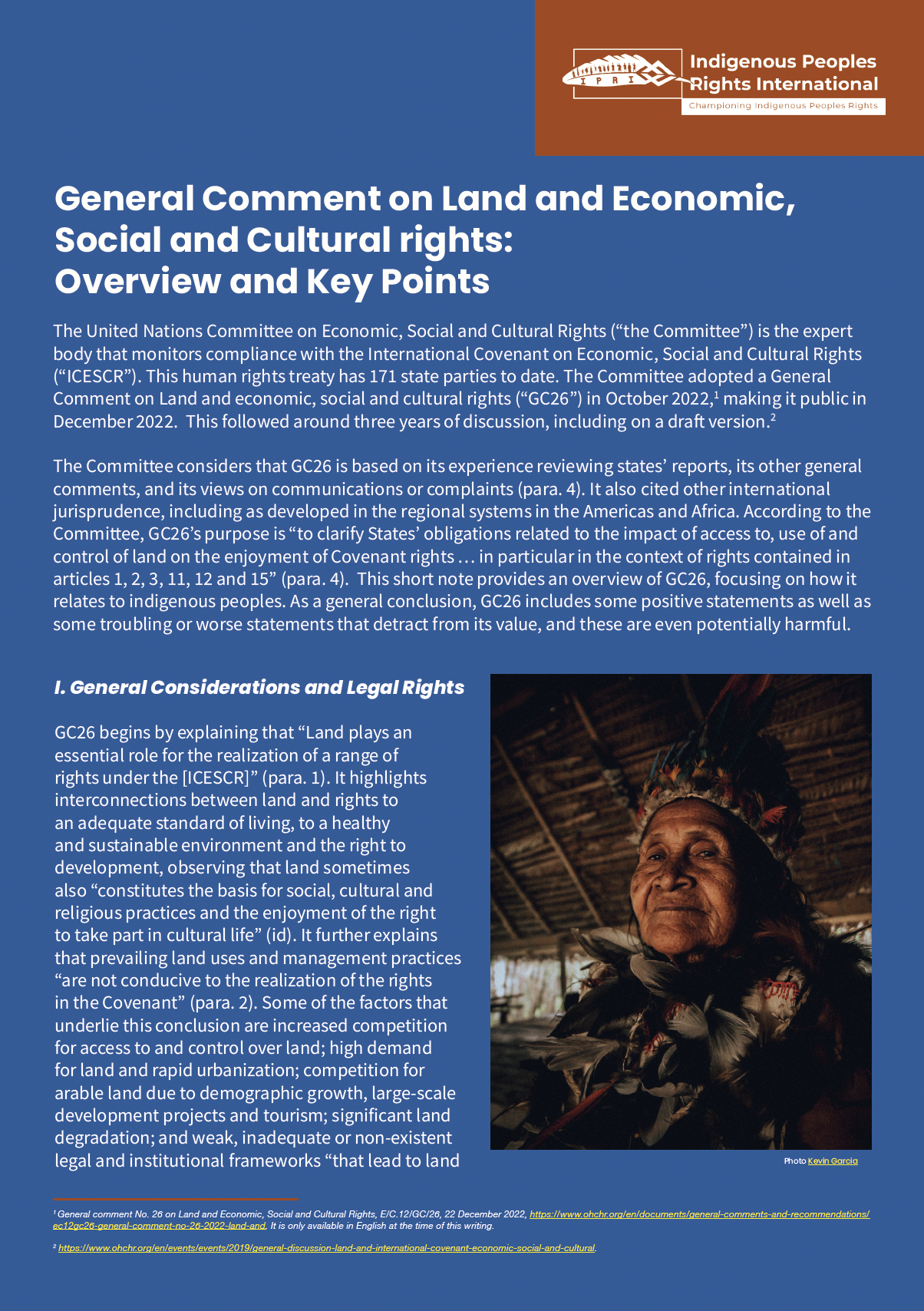
The United Nations Committee on Economic, Social and Cultural Rights (“the Committee”) is the expert body that monitors compliance with the International Covenant on Economic, Social and Cultural Rights (“ICESCR”). This human rights treaty has 171 state parties to date. The Committee adopted a General Comment on Land and economic, social and cultural rights (“GC26”) in October 2022, making it public in December 2022.[1] This followed around three years of discussion, including on a draft version.[2]
The Committee considers that GC26 is based on its experience reviewing states’ reports, its other general comments, and its views on communications or complaints (para. 4). It also cited other international jurisprudence, including as developed in the regional systems in the Americas and Africa. According to the Committee, GC26’s purpose is “to clarify States’ obligations related to the impact of access to, use of and control of land on the enjoyment of Covenant rights … in particular in the context of rights contained in articles 1, 2, 3, 11, 12 and 15” (para. 4).
This short note provides an overview of GC26, focusing on how it relates to indigenous peoples. As a general conclusion, GC26 includes some positive statements as well as some troubling or worse statements that detract from its value, and these are even potentially harmful.
[1] General comment No. 26 on Land and Economic, Social and Cultural Rights, E/C.12/GC/26, 22 December 2022, https://www.ohchr.org/en/documents/general-comments-and-recommendations/ec12gc26-general-comment-no-26-2022-land-and. It is only available in English at the time of this writing.
[2] https://www.ohchr.org/en/events/events/2019/general-discussion-land-and-international-covenant-economic-social-and-cultural.

